When Paul and I first met in the lounge of The Crowpark Hotel in Keswick, one of the things I said I would like to learn more about was how to pre-visualise the finished photograph before releasing the shutter. To start to think of the photographic workflow as one cohesive process, as opposed to a number of separate steps from seeing, to taking, to processing and finally to print or uploading to the web. This one step followed by another had largely been my way of doing things to date, so I wanted to try and link these stages together and change the way I thought about my approach to photography.
Common sense told me that what happens during each stage must have an impact on the next, and so on down the line. I guessed that by pre-visualising the finished image at the outset, decisions could be made at each stage, as the finished image could already be seen in the mind's eye. The skill therefore would be to know what might be possible and to take the photograph with this is mind.
For me this idea of thinking ahead was best demonstrated when Paul and I drove through Newlands Valley. I spotted a small group of trees on the horizon and although when we first arrived at this scene the clouds were universally grey, there was some movement in the sky, so we set up our cameras for the shot in the hope that the sky and light would improve.......and after about 20 minutes it did.
Straight out of the camera the RAW image looked like this; not too inspiring you might think but Paul had already talked me through his pre-visualisation of the 'finished' shot. I used a 1 or may be 2 stop graduated filter just to balance the exposure values between the sky and the foreground.
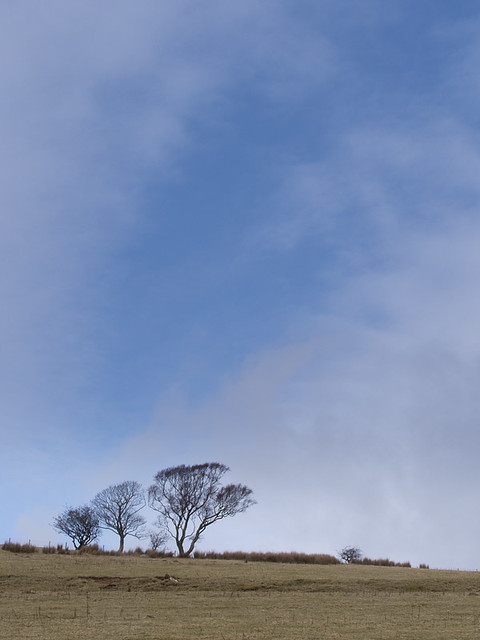 |
| 1 |
Back in the digital darkroom and using Lightroom I applied a 'preset' to boost the clarity, remove any chromatic aberration and apply a modest amount of sharpening. The next stage was to adjust the saturation and luminance of the blue channel, knowing that when the image was converted to black and white there would be the opportunity to increase the contrast in the sky. Having made these adjustments the RAW image now looked like this.
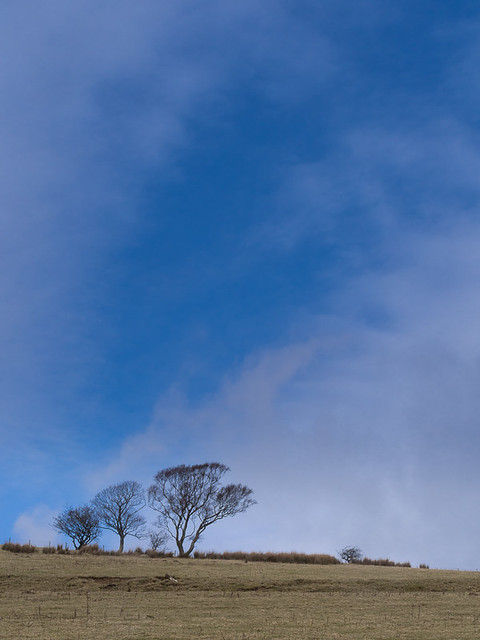 |
| 2 |
An improvement on the first image but hardly a photograph to get excited about. The next stage was to import the RAW file into photoshop and then convert the image to monochrome. Using 'Image' - 'Adjustment' - 'Black and white' a window opens which allows you to make adjustments to a range colour channels. Having boosted the saturation and luminance of the blue sky in Lightroom, I further darkened the blue channel to a value of -80. The resulting image is shown below.
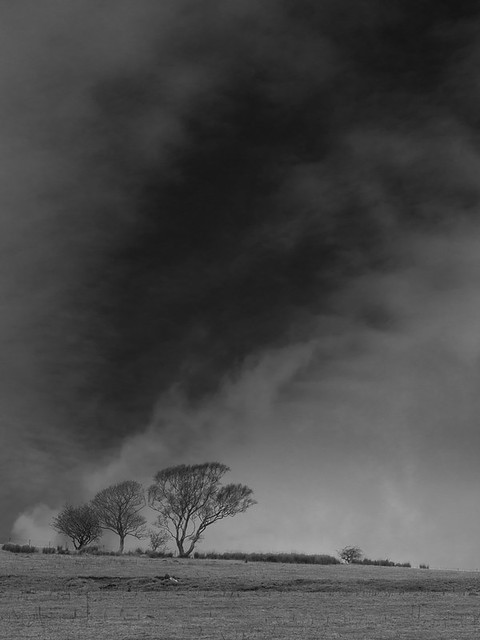 |
| 3 |
You might be forgiven for thinking this image is now worse than the colour version and I would probably agree but the next stage really brings the photograph to life. A 'levels' adjustment layer was applied and now the image looks like this.
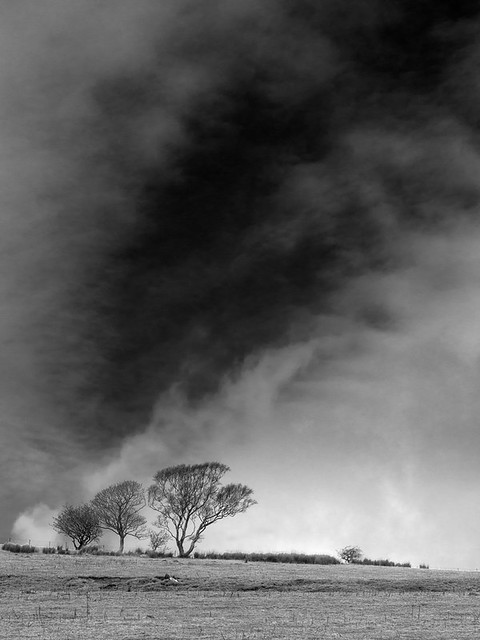 |
| 4 |
However some further fine tuning in photoshop was required. A number of 'curves' adjustment layers were made to selected areas of the image, before finally sharpening the trees and the foreground, but not the sky. The final adjustment was to crop the photo to balance the composition. Paul is a great believer in cropping to suit the image and not be concerned whether or not the end result conforms to one of the common aspect ratios - i.e. 3x2, 4x3, 5x4 or 1x1. Why be constrained by uniformity if a more custom approach is adopted and enhances each individual image? When I went on the workshop to the Isle of Eigg with Bruce Percy he was a very keen advocate of 5x4 or 1x1, couldn't stand 3x2, but rarely I think breaks away from the first two aspect ratios. His choice of course but it was good to hear another view. For now I will keep my options open and simply show the finished image.
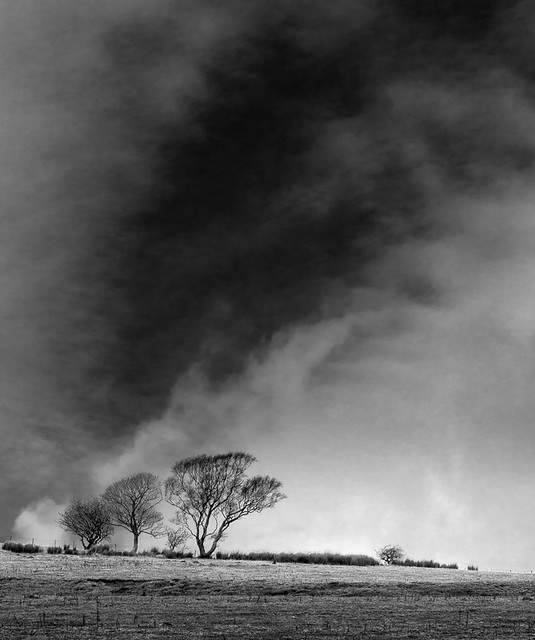 |
| Three Trees - the finished photograph OMD EM5 on a tripod with Panasonic f2.8 35-100mm lens 42mm f13 1/100sec ISO200 |
Personally I really like this shot. I love it's simplicity, the shape and size of the three trees and how their alignment echoes the diagonal line of the clouds. The ability to pre-visualise this shot at the outset is a great skill and is at the very heart of the photographic process. It's a skill which I doubt is ever mastered but with practice out in the field my knowledge can only grow with time; after all Paul has been practising his art of fine black and white photography for nearly 30 years. For me though it has opened my eyes to what is possible and that in my view is a great place from which to start.
Tweet

No comments:
Post a Comment